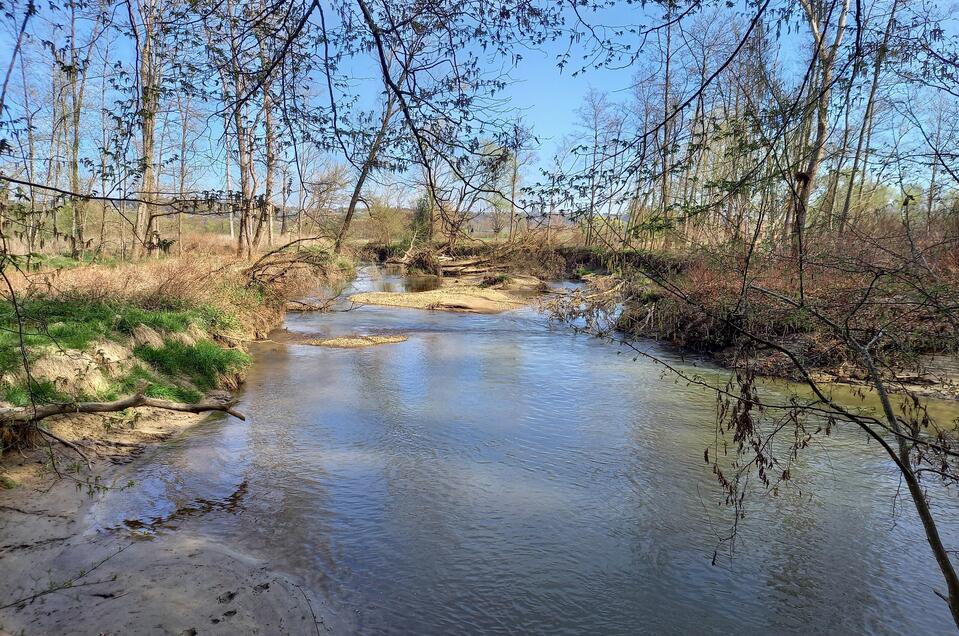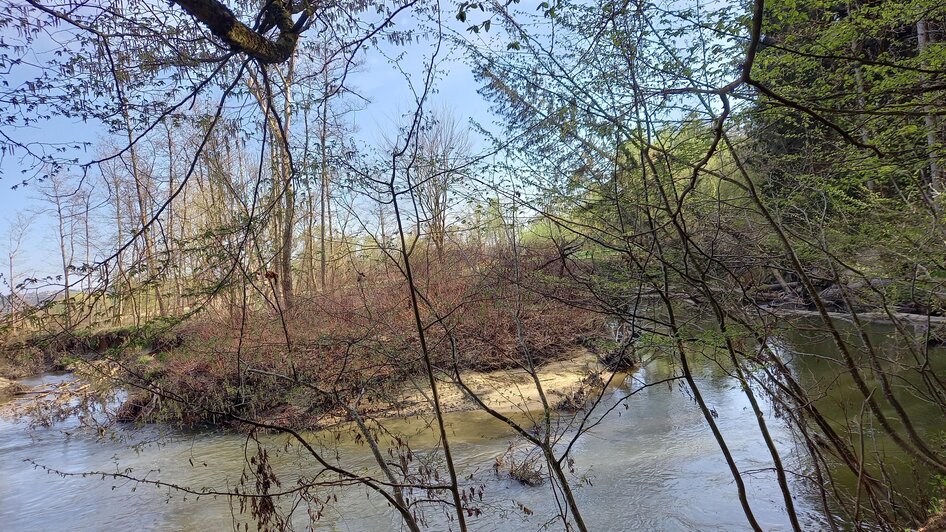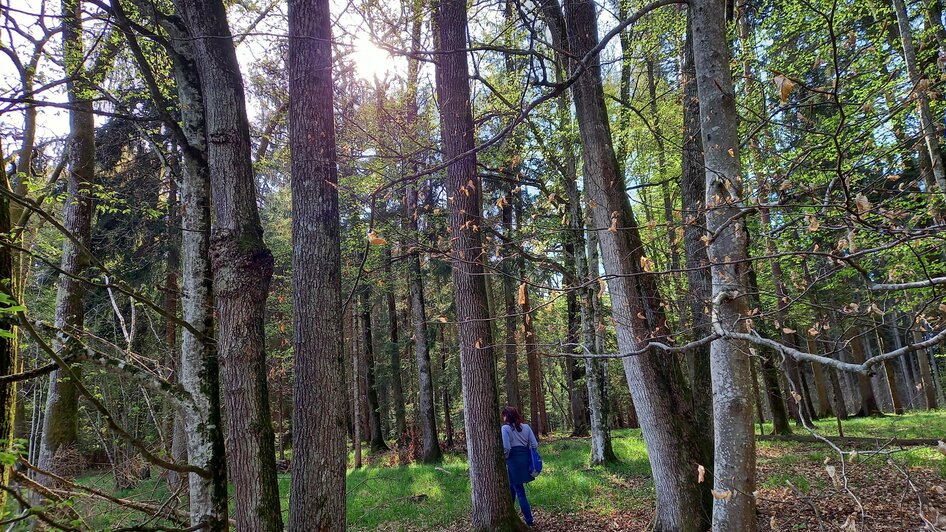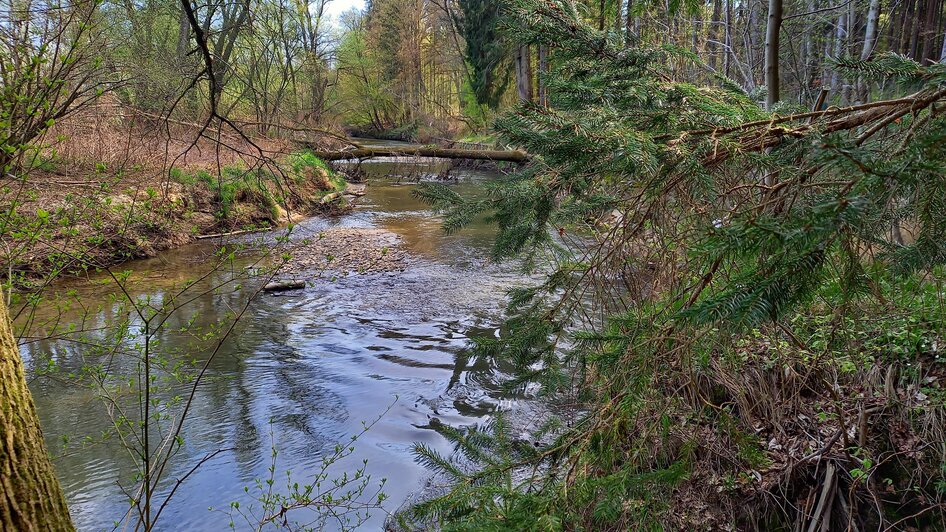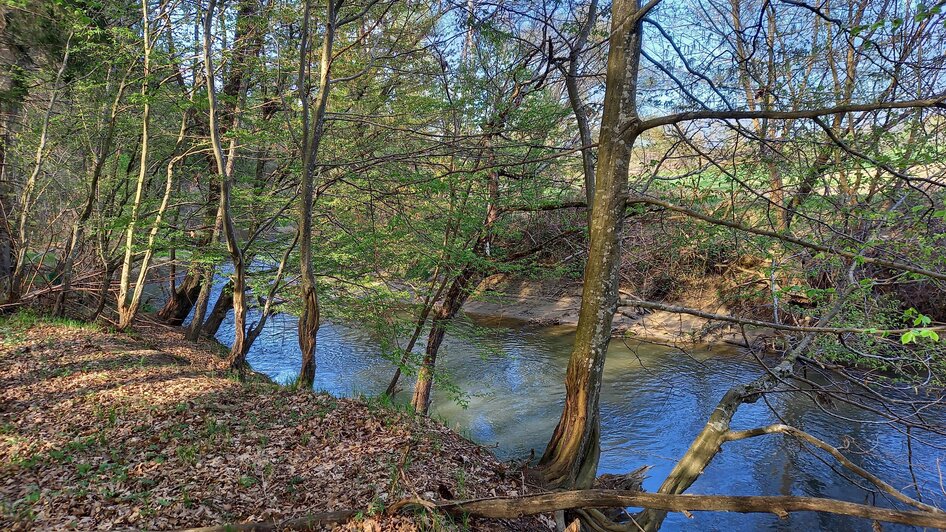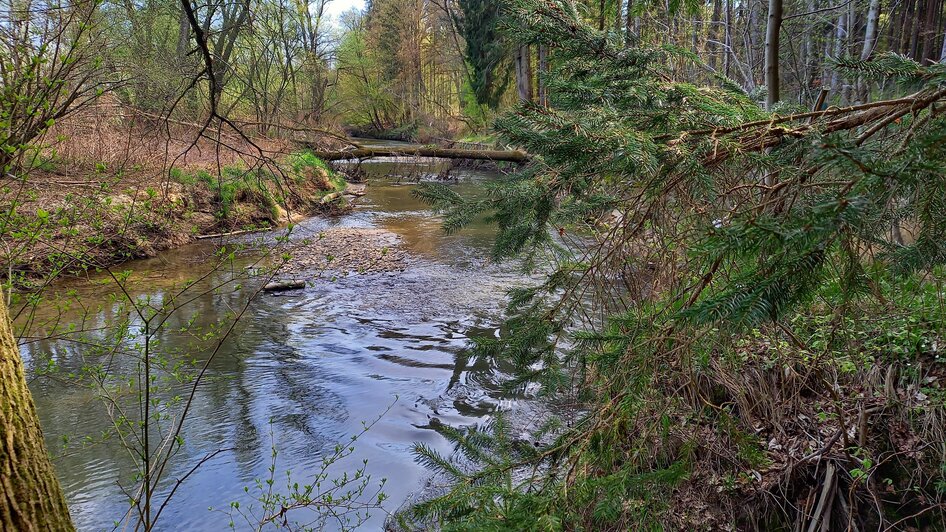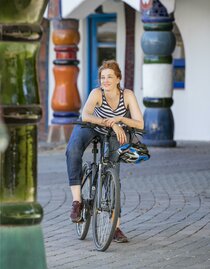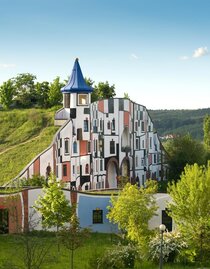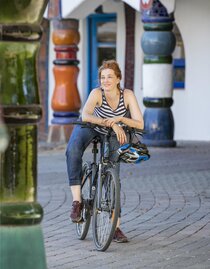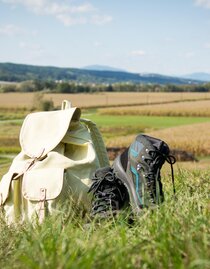The Lafnitz and its floodplains
Bad BlumauThe Lafnitz rises in the Styrian Wechsel region and flows into the Raab after approx. 110 km near St. Gotthard (Hungary). The river is considered one of the oldest borders in Europe. The Lafnitztalradweg B75 runs along the river from its source to the state border. The "Fantastic Tour" is a circular route (39 km) starting in Bad Blumau and also runs along the Lafnitz near Dt. Kaltenbrunn for a stretch.
The course of the Lafnitz has been largely preserved in its original form. This also applies to the Bierbaum/Deutsch Kaltenbrunn area, where the Lafnitz meanders between meadows, fields and forests after the confluence of the Lobenbach south of Burgau until it reaches the Safen river. In the immediate riparian area, floodplain landscapes offer ideal conditions for animals and plants (e.g. brown trout, kingfishers, otters).
The "Lafnitz Valley European nature reserve" comprises two areas protected under nature conservation law: The 70-hectare "Lafnitz-Stögersbach-Auen Nature Reserve" in Wolfau and the 31-hectare "Lahnbach Protected Landscape Area" near Dt. Kaltenbrunn.
The separate parts of the area are connected by the Lafnitz river. The European nature reserve covers a total area of 566.327 ha. The Lafnitz is one of the last unregulated lowland rivers in Austria. The free, unrestricted course of the Lafnitz naturally interacts with the accompanying riparian forests and valley meadows and creates a variety of river morphological habitat structures due to its unrestricted flow dynamics. The area includes the unregulated, largely free-meandering section up to Dt. Kaltenbrunn on the one hand and the "hard" regulated section up to the Austrian-Hungarian border on the other.
Additional Information
Included services
The „Lafnitztal European Conservation Area” includes two nature conservation protected areas: The 70 ha large “Nature Reserve Lafnitz-Stögersbach Floodplains” in Wolfau and the 31 ha “Protected Landscape Section Lahnbach” near Dt. Kaltenbrunn. The separated areas are connected by the flow section of the Lafnitz. The European conservation area covers a total area of 566.327 ha.
The Lafnitz is among the last unregulated rivers in the lowlands across Austria.
The free, unrestricted course of the Lafnitz naturally connects with accompanying floodplain forests and valley meadows and creates a variety of river morphological habitat structures through its unbound flow dynamics.
The area includes, on one hand, the unregulated, largely freely meandering stretch up to Dt. Kaltenbrunn, and on the other hand, the "hard" regulated flow section up to the state border of Austria – Hungary.
The flow of the Lafnitz hosts several freshwater habitats and species. Accompanying floodplain forests, which occupy comparatively large areas, are of particular significance. Small-scale mudbanks with their pioneer vegetation, non-flowing old waters, and primary tall herb communities are present as well.
The culturally rich landscape of the Lafnitz Valley, structured by meandering river courses, floodplain forests, field shrubs, and other landscape elements, is further characterized by extensive meadow areas.
The majority of the valley meadows consists of communities of the vegetation association of wet and marsh meadows.
Among the animal species, particularly water-dwelling species are represented: European otter, yellow-bellied toad, fire-bellied toad, great crested newt, stone loach, zingel, bullhead, etc.
On the adjacent meadow areas along the Lafnitz, the large blue butterfly and the dark blue butterfly are notable species; small forests and other shrubs in the cultural landscape are significant as feeding habitats for the whiskered bat and the greater mouse-eared bat.
